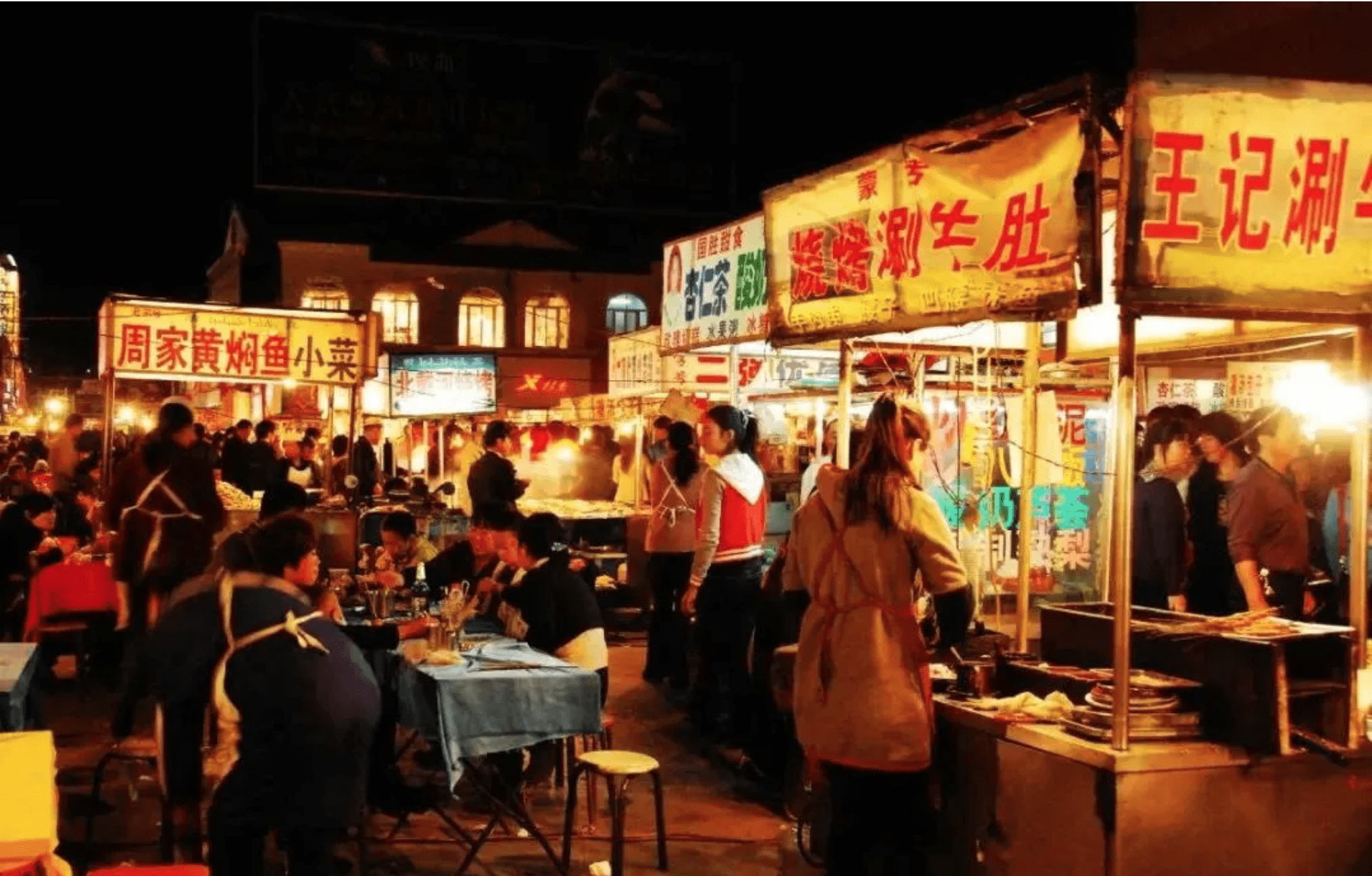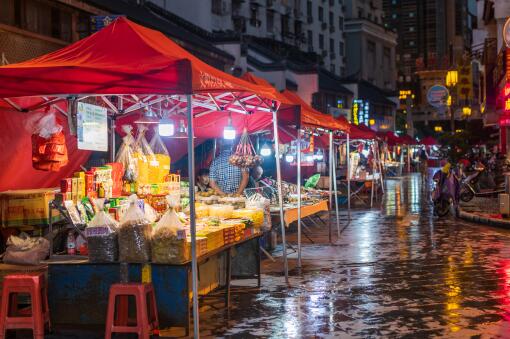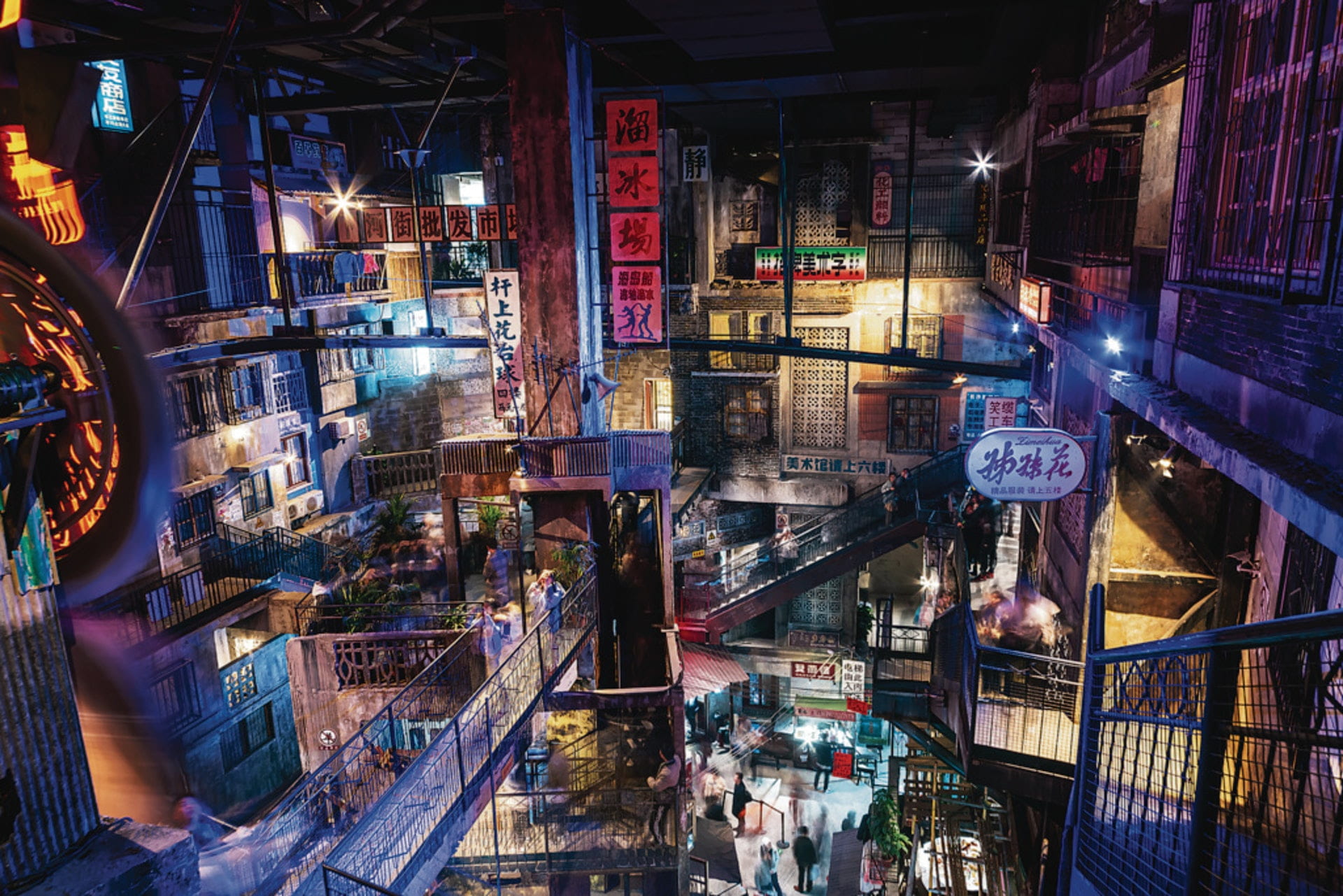
“Street food” means that the stall is placed on the side of the road. Why not be elsewhere? Everyone will give the correct answer to this silly question: because there are customers on the roadside. Therefore, we can say that roadside food stalls in the early days – or, partly the reason for their formation – were due to the establishment of crowded places. In other words, the stall owner of the roadside stall actively adapts to the flow of people and the social environment of the surrounding area, thus choosing the most suitable stall location. This is a completely autonomous choice, which is affected by many factors, but the final decisive factor lies in the head of the stall owner-he is free to choose the location, choose the food, and when he feels that he can earn some money, he goes out to set up a stall.
However, this situation is being changed by the gradual and comprehensive chengguan’s control and the ever-changing mobile media.
The transformation of urban management and the coexistence of roadside food-degradation and evolution
In the early days of urban development, urban management implemented a policy of banning all small vendors by the order of the national government. Solinger also talks about it when he studies the history of China’s street food policy. In recent years, as the stall economy has taken to the stage and there are more and more distinctive stall foods, the government’s opinions on it are no longer so “one size fits all”. On the one hand, along with documentaries such as China on the Tip of the Tongue(Shejianshangdezhongguo) and a Chuan of Life(Renshengyichuan), which embodied the culture contained in the roadside food, the government began to want to use the roadside stalls as a special cultural business card of a city. Therefore, some reputable big vendors are grouped together to become a roadside stall bazaar-this bazaar is getting bigger and bigger, gradually becoming a gathering place, a form of a festival, and sometimes tickets are needed. The target crowd of this kind of market is not passersby in a hurry to eat, but young people who want to appreciate this relatively high-end roadside stall culture-visiting this kind of stall is like visiting a new type of shopping mall. What is important is not just the food, but the uniqueness and atmosphere.
This is a street food market in Kunshan after COVID-19. As a water town, Kunshan hosts many night market in the summer.
Many roadside stalls participate in it, forming a large-scale entertainment event, and at the same time, it also shows a more cultural atmosphere.
On the other side, those people who only wanted to make a living by the roadside stalls were also gathered together. They are prescribed a fixed time and place, and even the types of food they sell are often fixed. They are more like being hired as a laborer than as a shop keeper. This phenomenon can also be seen in Shanghai today. When we do our mapping project, we can see breakfast cars near the Zhangjiang Science and Technology Park. These breakfast cars belong to the same company. The company has obtained government approval to operate in a certain area, and then individuals will operate the restaurant cars by franchising. In this case, the company will provide fixed raw materials every day, and there is very little room for individuals to choose from. This kind of roadside stall has actually returned to its most original function, that is, to meet the needs of roadside pedestrians.

In modern society, we can see the separation of these two kinds of roadside stalls. The former has become high-level but temporary. Many of its vendors already have fixed food stores. This form is just a relatively special exhibition; The other is a machine that becomes modular and perfectly fulfills the supply relationship in an urban component.
Redefinition of roadside stall culture by the social media
The use of social media also made these two kinds of stalls completely different. The interesting and fun collective stalls will be widely promoted and even regarded as a small-scale business district on social platforms. This kind of stall economy has become the “net celebrity” – they have become a trend of young people, become a travel place to check, and their cultural attributes have become vapid on the Internet and become a kind of popular culture.

Changsha “net celebrity” retro food market “Wenheyou(文和有)”.
The founder started as a roadside stall, and eventually created an isolated retro cultural space with dozens of vendors staying in.
During this year’s National Day, the reservations online for the most popular crayfish stalls lined up more than two thousand people.
At the same time, this kind of stall culture also serves as the main body of communication and promotes the local residents’ sense of identity with cultural characteristics. Although the latter type of standardized roadside stalls does not have such a strong entertainment effect, they can also be used as an aspect of a cultural city and used for civilized city publicity to create a cleaner and orderly city image.
The free evolution of roadside food stalls has deviated from its governance concept after the formation of modern cities. Some street foods are managed uniformly by the government, losing their independence and originality; others are highlighted due to their cultural representativeness, promoted to net celebrity food, and become a more atmospheric, more advanced commodity space. In China, this phenomenon is particularly obvious. Chinese cultural symbols seem to be more conflicting with modern metropolises, so it is difficult to adopt old takeaway stalls in public places. However, the examples of Taiwan and Singapore are worth learning. How to preserve the culture while also ensuring the appearance of the city will be the focus of Chinese cities (especially those tourist ones) in the future.
Leave a Reply